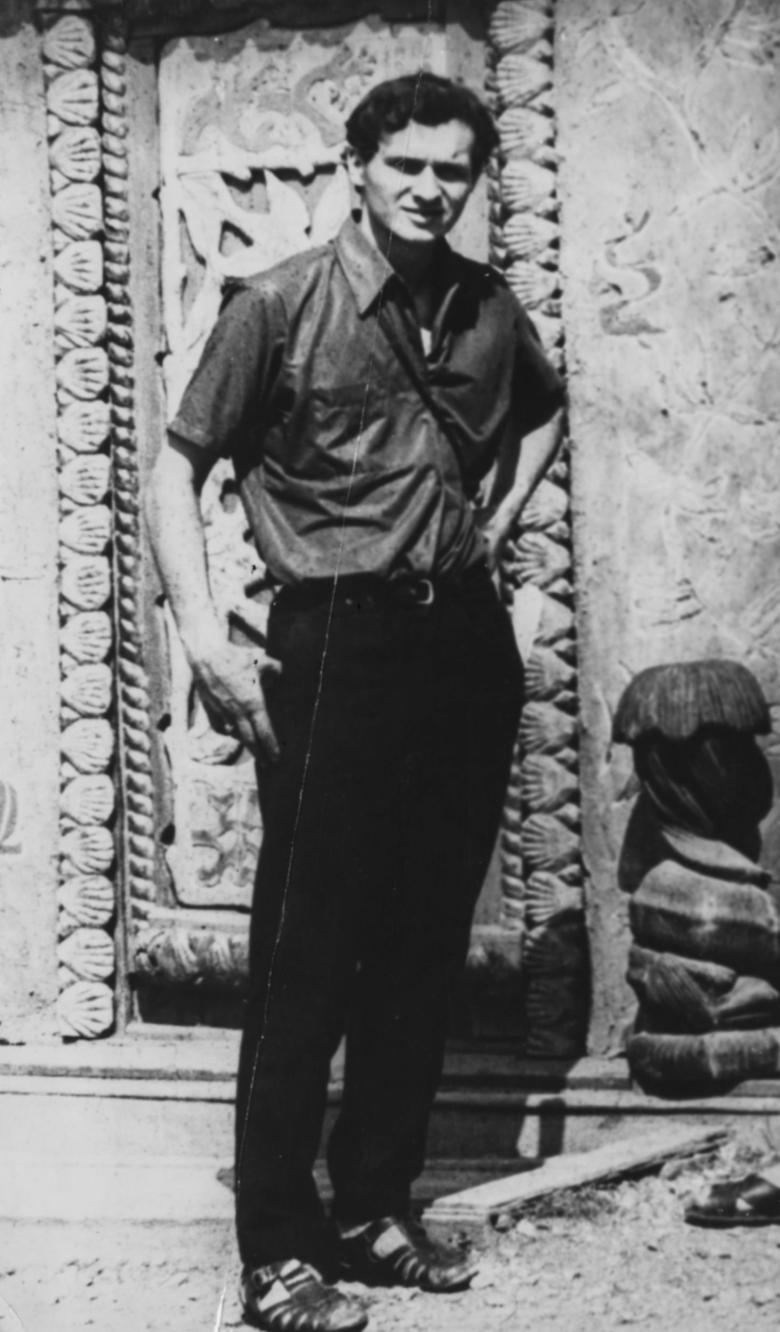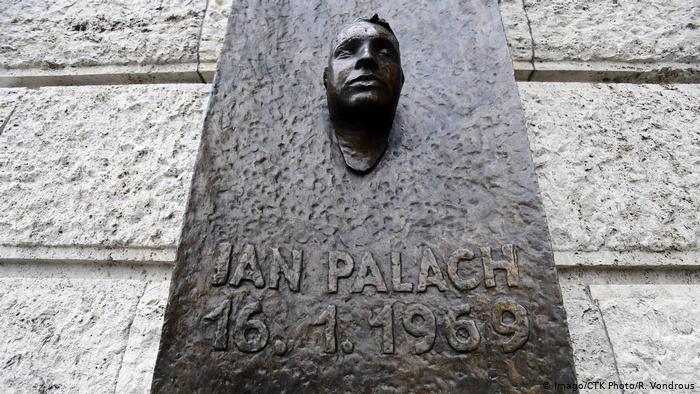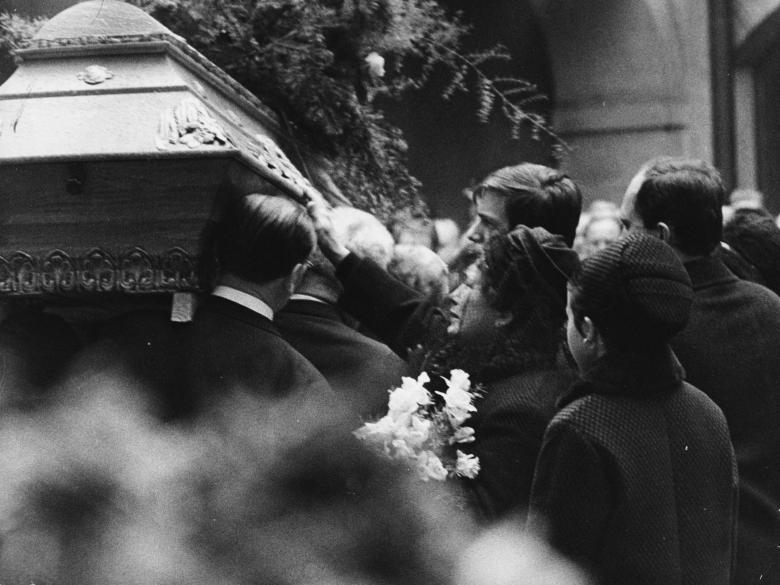Děkuji všem co tvoří kalendárium, v každém článku se člověk něco zajímavého a nového dozví, např jsem nevěděl že se Palach před upálením zdrogoval éterem, jen tak dále... Díky  J. D.
J. D.
16.01.1969 - The Burning Torch of Jan Palach
Categories: Personalities , Calendar
He protested against the Soviet occupation and sacrificed the ultimate price - his own life. Jan Palach, a student of history and political economy at the Faculty of Arts of Charles University, burned himself to death on 16 January 1969, dying in great pain three days later.
Twenty-year-old Palach burned himself to death in the upper part of Wenceslas Square near the National Museum. There he put down his bag and breathed ether, then poured it over himself and set himself on fire. He then jumped over the railing and ran like a living torch to Washington Street, where Jaroslav Špírek, a dispatcher for the transport company, tried to extinguish him with his coat. Thirty-six-year-old Marta Indrová was also present at the time and was the first to read Palach's letter. "There is a letter in the briefcase... by the fountain. Read it," the young man said to the woman, through pursed lips. He was then taken to the Burns Clinic of the University Hospital Královské Vinohrady.
His courageous act is still remembered by the media not only in the Czech Republic but also abroad. For example, the British newspaper The Guardian wrote how Palach became a symbol of the generation of that time. "It was probably the most dramatic suicide of the 20th century. Neither the protest by Buddhist monks in Saigon against the war in Vietnam nor the act of forty-eight-year-old Graham Bamford, who burned himself to death outside the House of Commons in London in 1993 to protest against the horrors in Bosnia," says The Guardian.
They also point out that self-immolation is one of the most painful ways to die. Palach was burned over 85 percent of his body and suffered excruciating pain for three days before he died in hospital. "His act was really powerful because it struck a sensitive nerve when society was on its way to oblivion about its situation," Zdeňka Gabalová, who worked as a counsellor at the Czech embassy in London, said earlier.
Palach himself wrote in a letter he left three copies of before his death that he wanted to awaken the people. He also referred to himself as Torch No. 1. He wanted to give the impression that this was a mass organised action. At the hospital, the psychologist who had been summoned appealed to him if others should stop, saying that he must be in terrible pain. But Palach said that Hus had died at the border. The regime at the time wanted to make a recording of the student to discourage others from committing similar acts.
After his death, Palach's body was taken to the forensic medical centre in Albertov. The sculptor Olbram Zoubek got inside. Palach was lying in the corridor covered with a flag and surrounded by flowers brought from Wenceslas Square. The sculptor managed to create a posthumous mask. In July 1970, he then set a bronze tombstone on Jan Palach's grave in Olšany Cemetery in Prague. However, the state security removed it in August and had it melted down in December. In 1990, the tombstone was re-cast according to the original model and installed.
According to historian Petr Blažek, Jan Palach's deed has made an indelible mark on the life of society. "Perhaps 'only' because even today he continues to stir up and provoke discussion about the basic questions of life. Even after almost half a century, we do not know everything about Jan Palach's life and thinking. Today he would be almost 70 years old, probably still interested in his beloved history, which he studied for only three months. It would certainly have been an interesting debate with him," Blažek told Charles University's online magazine.



Source: www.theguardian.com, http://www.olbramzoubek.cz/, https://iforum.cuni.cz/, www.dw.com, www.welt.de
The article is included in categories:
Post
Kdo se hlouběji kdy zajímal o tento čin, tak ví, že Jan Palach byl duševně nemocný jedinec dlouhodobě trpící depresemi. S projevem vlastenectví bohužel jeho čin nemá nic společného.
namor: Nevím zda byl či nebyl duševně nemocný.Ale normálně smyšlející jedinec, nesáhne tak radikálnímu činu.
JohnDeeere: Děkuju. Mám radost, že se články líbí 
JohnDeeere: Děkuju. Mám radost, že se články líbí 
Při vzpomínce na smrt Palacha se vždy zamýšlím, jak je možné, že tak mladý člověk si sáhnul na svůj život. Tehdy mi bylo 17,5 roku a nesl jsem jeho čin velmi těžce a dodnes jsem se s tím nedokázal nějak vyrovnat a smířit. Snad kdyby si před tím vzpomněl na rodiče a hlavně na maminku, jakou bolest jí způsobí svým činem, tak by ho ten nápad snad přešel. Byl jsem v učení, to mě opravdu bavilo, zamilovaný do děvčete až po uši, mamka byla pro mě svatá Marie a to doslova a do písmene, protože jsem si jí v dětství kvůli její nemoci moc neužil, takže představa, zapálit se na protest kvůli čemukoliv mi nepřišla rozumná, protože život je jen jeden, není návratu zpět a já jsem to tady na světě miloval, ikdyž kolem nás padala ho..a. Opravdu je mi líto jeho života, dodnes na ztrátu tak mladého člověka vzpomínám a nelibě jeho smrt nesu, co by nám asi tak dnes řekl.....  Za kalendárium děkuji, jak už jsem psal, je to skvělý nápad !
Za kalendárium děkuji, jak už jsem psal, je to skvělý nápad ! 
To Mildas- souhlasím s každým slovem, jsem mladší, mě v tom roce byl necelý rok, až mnohem později jsem začal vnímat jeho čin, nechci se opravdu ničeho dotknout, je to citlivé téma, ale mnohokráte jsem o tomto mluvil s různými lidmi, a těžko pro mne pochopit takovýto druh sebevraždy. Já jsem se díky úrazu před 22 roky opravdu ošklivě popálil, měl jsem spáleniny 2 a 3 stupně na 18procentech těla, také jsem ležel dva měsíce na Vinohradech , a věřte, nikomu bych to nepřál, a to už byla velmi pokročilá medicína. Každý převaz byl v narkoze, a těžko se tomu věří, ale převalení ze zad na břicho, abych si trochu ulevil od ležení mi trvalo i čtyři hodiny, to bylo po milimetrech. Proto tohle já osobně nedokážu pochopit. ..... Viky, toto kalendárium je úžasné věc, moc děkuji, každý článek si rád přečtu. Mějte se Všichni fajn.
To namor: přesně tak!












